The MLB strike has had a significant impact on the game of baseball, creating both challenges and opportunities for players, teams, and fans alike. As negotiations between the league and the players association continue, the consequences of the strike are becoming more apparent.
The strike has disrupted player performance and team strategies, forcing players to find ways to stay in shape and maintain their skills during the hiatus. Additionally, the absence of games has had a profound impact on fan engagement, with stadiums sitting empty and fans longing for the return of America’s favorite pastime.
In this article, we will analyze the impact of the MLB strike from various angles, shedding light on the effects it has had on the game and exploring potential resolutions. From the evolution of analytics in baseball to changes in game strategy and the influence of technology on umpire performance, we will delve into the key issues surrounding the strike and provide valuable insights and analysis.
Join us as we explore the circumstances surrounding the strike and navigate through the ever-evolving dynamics of Major League Baseball.
Key Takeaways:
- The MLB strike has had significant consequences for player performance, team strategies, and fan engagement.
- Analyzing the evolution of analytics in baseball provides insights into the current state of the game.
- The 2022 MLB strike has led to drastic changes in game strategy and adaptation by teams.
- Advancements in umpire performance and automation of ball-strike calls are shaping the future of the game.
- Racial dynamics and discrimination continue to impact player opportunities and the overall reputation of the sport.
The Evolution of Analytics in Baseball and Its Influence on the MLB Strike
In recent years, analytics has transformed the way baseball teams strategize and make decisions. The use of advanced statistics and data analysis techniques has revolutionized the game, impacting not only player performance but also the broader landscape of Major League Baseball. This section will explore the evolution of analytics in baseball and examine its influence on the MLB strike.
The Legacy of Bill James and Sabermetrics
One of the key figures in the evolution of baseball analytics is Bill James, a renowned statistician and writer. James pioneered the concept of sabermetrics, which involves using statistical analysis to evaluate player performance and team strategies. Through his groundbreaking work, James challenged traditional baseball wisdom and paved the way for a more data-driven approach to the game. Sabermetrics has since become an integral part of baseball analytics, shaping how teams evaluate players, draft prospects, and make in-game decisions.
The ‘Moneyball’ Effect and Its Spread Across MLB
The impact of analytics on MLB became widely recognized with the success of the Oakland Athletics in the early 2000s. The book “Moneyball” by Michael Lewis highlighted the team’s use of data analysis and efficient resource allocation to compete against larger market teams. This approach, popularized by general manager Billy Beane, revolutionized how teams evaluated players and constructed their rosters. The ‘Moneyball’ effect spread rapidly across MLB, with teams embracing statistical analysis and seeking to gain a competitive edge through analytics.
The adoption of analytics by MLB teams has led to a shift in how players are assessed and valued. Traditional scouting methods have given way to the analysis of advanced metrics such as on-base percentage, slugging percentage, and defensive statistics. Teams are now prioritizing players who exhibit specific skills that align with the data-driven strategies influenced by analytics.
Changing Perspectives on Player Performance and Strategy
Analytics has not only influenced how teams operate but has also transformed how fans, media, and players perceive the game. The focus on data-driven analysis has shifted the conversation around player performance from traditional statistics to advanced metrics. Concepts such as wins above replacement (WAR), launch angle, and exit velocity have become prominent in discussions about player value and effectiveness.
The increased use of analytics has also shaped in-game strategies. Managers and coaches now rely on statistical models and matchup-based analysis to make decisions on pitching changes, defensive alignments, and offensive approaches. This shift has led to shorter outings for starting pitchers and an increased emphasis on bullpen usage and platooning.
The influence of analytics on player performance and strategy cannot be understated, and its impact on the MLB strike is a topic of considerable interest and debate.
| Impact of Analytics on the MLB Strike |
|---|
| Analyzed player performance during the strike period |
| Identified trends and patterns in team strategies |
| Examined the role of analytics in contract negotiations and disputes |
| Explored the potential influence of analytics on labor relations |
2022 MLB Strike: Analyzing the Drastic Changes in Game Strategy
The 2022 MLB strike had a significant impact on game strategy, forcing teams to adapt and make drastic changes in their approach to pitching, hitting, and fielding. As players went on strike, teams were left with limited options, leading to innovative and unconventional strategies to compensate for the absence of key players.
One of the most noticeable changes in game strategy during the strike was the emphasis on pitching. With star pitchers unavailable, teams had to rely on their bullpen and deploy a combination of relievers to cover the innings. This led to an increased focus on bullpen management, with managers carefully monitoring pitch counts and matchups to maximize effectiveness.
Hitting strategies also underwent a transformation during the strike. With power hitters absent, teams shifted their focus to small ball tactics, including bunting, stealing bases, and hitting for contact. The objective was to manufacture runs through speed and precision rather than relying solely on home runs. This change in approach challenged traditional notions of power and showcased the importance of versatility and adaptability.
Fielding strategies were also affected by the strike. In the absence of exceptional defensive players, teams prioritized positioning and coordination. Shifts became more prevalent, with infielders and outfielders adjusting their positions based on hitters’ tendencies. Increased communication and teamwork were crucial in maintaining strong defense without the usual defensive standouts.
Overall, the impact of the 2022 MLB strike on game strategy was twofold. It forced teams to be creative and adaptive, leading to the emergence of new strategies and tactical approaches. Additionally, it highlighted the importance of depth and versatility in team composition, as the absence of star players necessitated a collective effort to remain competitive.

| Changes in Game Strategy during the 2022 MLB Strike | Implications |
|---|---|
| Increased emphasis on bullpen management | Enhanced strategic usage of relievers, pitch count management |
| Shift towards small ball tactics | Greater reliance on speed, contact hitting, and situational tactics |
| Greater importance on positioning and coordination in fielding | Increased defensive shifts, enhanced teamwork |
Umpire Performance Enhancements – Will Tech Replace Umpires?
In the ever-evolving landscape of Major League Baseball, advancements in umpire performance have become a topic of interest and discussion. With technology continuously improving, the question arises: will automation replace human umpires in making ball-strike calls? In this section, we will explore the potential impact of technology on umpire decision-making and discuss the development of automated ball-strike accuracy systems.
Advancement in Ball-Strike Accuracy: A Step Towards Automation
One area of umpire performance enhancement that has gained significant attention is the pursuit of more accurate ball-strike calls. Automated systems, such as the Automated Ball-Strike System (ABS), are being developed to provide real-time data and analysis for each pitch. These systems utilize advanced tracking technology to precisely determine whether a pitch was a ball or a strike, eliminating human error and subjectivity.

The implementation of automated ball-strike accuracy systems has the potential to revolutionize the game by ensuring consistent and objective calls. By removing the reliance on human judgment, the accuracy of these systems could enhance the integrity and fairness of the game, reducing controversies and disputes surrounding ball-strike calls.
Impact of Age and Technology on Umpire Decision Making
Age has long been a subject of consideration in umpire performance discussions. As technology continues to shape the game, younger umpires, who have grown up with digital advancements, may adapt more seamlessly to utilizing automated systems. Their familiarity with technology and willingness to embrace change may make them more receptive to the incorporation of automated ball-strike calls.
On the other hand, more experienced umpires may face challenges in adjusting to new technologies. Years of expertise and intuition developed through on-field experience might clash with the objectivity and consistency that automated systems provide. The debate between the merits of experience and the precision of technology adds complexity to the discussion surrounding umpire performance enhancements.
In conclusion, the advancement of umpire performance enhancements, specifically in the realm of ball-strike accuracy, presents both opportunities and challenges. The potential automation of ball-strike calls has the capacity to improve the accuracy and fairness of the game, but it also raises questions about the role of human umpires and the impact on their decision-making. As technology continues to evolve, the future of umpiring in baseball remains a fascinating and ongoing conversation.
The Racial Dynamics Within MLB: Discrimination and Performance
This section explores the racial dynamics within Major League Baseball (MLB) and analyzes the issues of discrimination and performance. It discusses cases of racial discrimination that have occurred in the league and examines the implications for players as well as the overall reputation of the sport. Furthermore, it delves into the impact of discrimination on player performance and opportunities within the league.
“Discrimination has no place in our game. We must continue to work towards creating an inclusive and equitable environment for all players.” – Commissioner Rob Manfred
MLB, like any industry, has had its fair share of incidents involving racial discrimination. These incidents not only affect the targeted players but also tarnish the reputation of the league as a whole. It is essential to address these issues head-on and take significant steps towards eradicating discrimination from the sport.
Racial discrimination in MLB can manifest in various forms, such as unequal treatment, racial slurs, or biased decision-making. These instances create an environment where players from marginalized communities face additional barriers and challenges in their careers.
Discrimination not only affects the emotional well-being of players but can also impact their on-field performance. The psychological and emotional toll of experiencing discrimination can lead to decreased confidence, concentration, and overall performance levels. This can affect both the individual player and the team’s overall success.
Furthermore, discrimination can limit players’ opportunities within the league. Research has shown that players of color may face disparities when it comes to managerial positions, coaching staff, and front office roles. This underrepresentation limits the diversity and inclusivity within MLB and hampers progress towards an equal and fair playing field.
MLB has taken steps to address these issues, implementing initiatives such as the RBI Program (Reviving Baseball in Inner Cities) to promote diversity and inclusion at the grassroots level. However, there is still work to be done to ensure equal opportunities and fair treatment for all players, regardless of their race or ethnicity.
Overall, it is crucial for MLB and its stakeholders to actively combat racial discrimination within the sport. By prioritizing diversity, inclusion, and addressing the underlying racial dynamics, the league can foster an environment where all players can thrive and contribute to the game.
Racial Diversity in MLB
| Season | Percentage of Players of Color |
|---|---|
| 2020 | 42.5% |
| 2010 | 39.2% |
| 2000 | 38.3% |
Note: The table above showcases the percentage of players of color in MLB over the past decade. While the numbers have seen a slight increase, there is still a need to ensure greater representation and opportunities for players from marginalized communities.
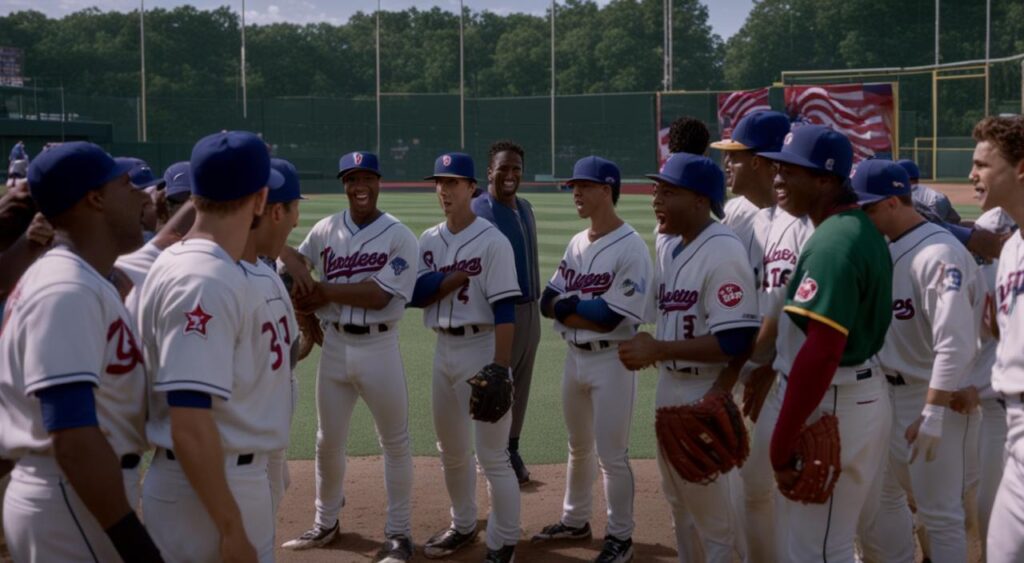
Interpreting MLB’s Automatic Ball and Strike Zone
In recent years, Major League Baseball (MLB) has been implementing technology-driven innovations to improve the accuracy and consistency of ball and strike calls. One of the significant changes that have been introduced is the automatic ball and strike zone. This system utilizes advanced tracking technology to determine whether a pitch is a ball or a strike, taking away the subjective element of human umpire judgment.
The Future of Pitch Framing and Umpire Accountability
With the implementation of the automatic ball and strike zone, the future of pitch framing, a technique used by catchers to make pitches outside the zone appear as strikes, is uncertain. Traditionally, skilled catchers have been able to manipulate the umpire’s perception of a pitch’s location through subtle movements and framing techniques. However, with the accuracy and consistency of the automatic system, the importance of pitch framing may diminish over time.
Furthermore, the introduction of the automatic ball and strike zone raises questions about umpire accountability. In the past, umpires were responsible for making split-second decisions on balls and strikes, often facing criticism for inconsistent calls. The automated system removes this burden from the umpires, but it also reduces their influence and authority in the game. As technology continues to advance, there may be a shift towards increased scrutiny and evaluation of umpire performance.
Resistance and Acceptance Within the Baseball Community
Like any significant change, the implementation of the automatic ball and strike zone has faced resistance and acceptance within the baseball community. Traditionalists argue that the human element of umpiring is an integral part of the game’s history and should not be tampered with. They believe that the introduction of technology removes the unpredictability and subjective nature of the game.
On the other hand, proponents of the automatic system highlight its potential to eliminate bias and improve accuracy in umpire calls. They argue that removing human error can lead to fairer outcomes and enhance the overall integrity of the game. The acceptance of these changes varies among players, coaches, and fans, with ongoing debates and discussions shaping the future of ball and strike calls in MLB.
In conclusion, the automatic ball and strike zone in MLB marks a significant shift in how pitches are evaluated. As technology continues to develop, it is crucial to analyze the impact of these changes on the game, including the future of pitch framing and the level of umpire accountability. The resistance and acceptance within the baseball community will play a pivotal role in determining the long-term viability of the automatic system and its implications for the sport.
Conclusion
In conclusion, the MLB strike has had a significant impact on the game of baseball. Our analysis and insights have shown that the strike has affected various aspects of the sport, including player performance, team strategies, and fan engagement. The evolution of analytics in baseball, influenced by pioneers like Bill James and popularized by the ‘Moneyball’ approach, has played a role in shaping the game and potentially contributing to the strike.
During the 2022 MLB strike, we witnessed drastic changes in game strategy as teams adapted to the new circumstances. These adjustments in pitching, hitting, and fielding will have long-term implications for the game. Additionally, advancements in umpire performance enhancement and discussions around automating ball-strike calls have raised questions about the future of umpires in the game.
Another crucial issue that came to light during our analysis is the racial dynamics within MLB. Instances of discrimination have affected players and tarnished the reputation of the sport. The impact of discrimination on player performance and opportunities within the league cannot be ignored.
In the face of these challenges, it is crucial for MLB to address these issues and work towards resolutions. Looking ahead, we believe that greater emphasis on fairness, inclusivity, and accountability will be essential for the future of the game. By leveraging the power of analytics, embracing technological advancements, and promoting a more diverse and equitable environment, MLB can navigate the challenges posed by the strike and shape a stronger and more inclusive future for baseball.
FAQ
What is the impact of the MLB strike?
The MLB strike has had significant effects on the game, including disruptions to the season, player performance, and fan engagement. It has also led to negotiations between players and the league regarding various issues.
How has analytics influenced the MLB strike?
Analytics, including the use of advanced statistics and data analysis, have played a role in shaping player performance and team strategies. The success of the ‘Moneyball’ approach popularized by the Oakland Athletics has further spread the use of analytics across MLB, potentially contributing to the MLB strike.
What changes in game strategy were observed during the 2022 MLB strike?
The 2022 MLB strike prompted teams to adapt their approach to pitching, hitting, and fielding. The altered strategies had both immediate and long-term implications for the game, challenging traditional notions of play and potentially reshaping the future of baseball.
Will technology replace umpires in MLB?
The advancement of technology, such as automated ball-strike accuracy systems, has raised questions about the future role of umpires in MLB. While some argue for increased use of technology, others advocate for maintaining the human element in officiating the game.
What are the racial dynamics within MLB?
MLB has faced issues of discrimination, including racial discrimination, which have impacted the reputation of the sport. Discrimination can also affect player performance and opportunities within the league, highlighting the need for continued efforts towards equality and inclusivity in baseball.
What are the implications of MLB’s automatic ball and strike zone?
MLB’s automatic ball and strike zone, which utilizes technology to determine accurate calls, has the potential to change the game’s dynamics. This includes the future of pitch framing, increased umpire accountability, and the ongoing debates surrounding the acceptance or resistance to these changes within the baseball community.













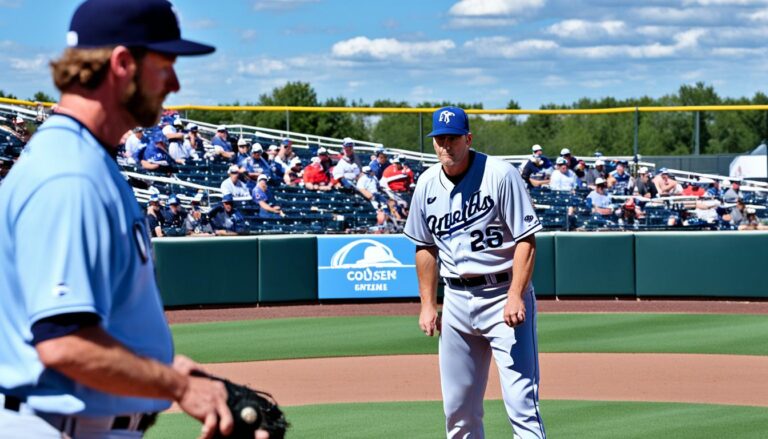
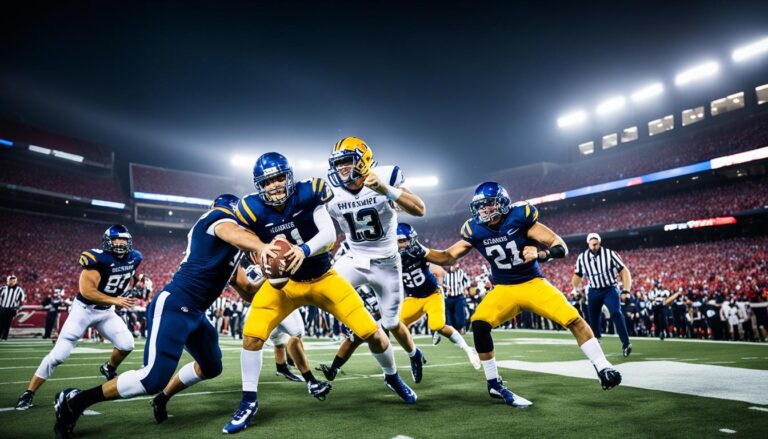



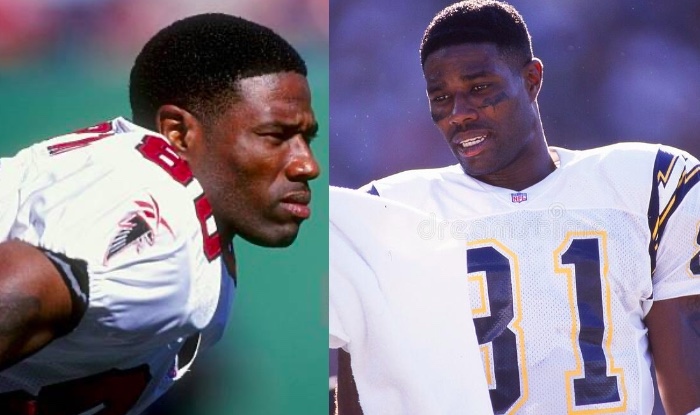

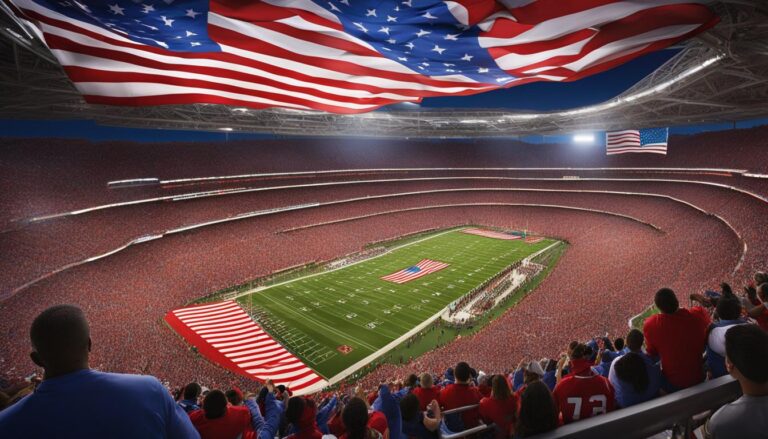
+ There are no comments
Add yours